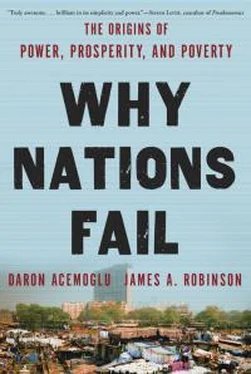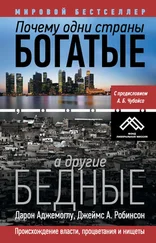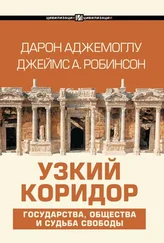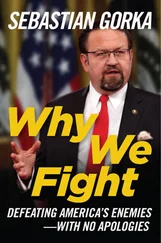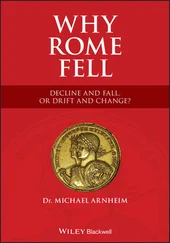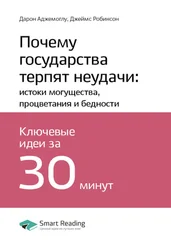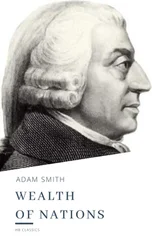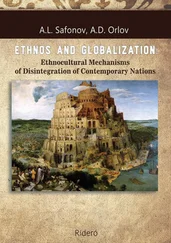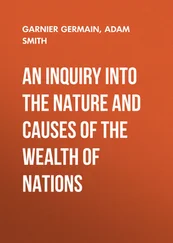Our discussion of the origins of the Rothschilds follows Ferguson (1998); Mayer Rothschild’s remark to his son is reproduced from Ferguson, p. 76.
Our discussion of the impact of the French on European institutions is taken from Acemoglu, Cantoni, Johnson, and Robinson (2010, 2011) and the references therein. See Doyle (2002) for a standard overview of the French Revolution. Information on the feudal dues in Nassau-Usingen is from Lenger (2004), p. 96. Ogilivie (2011) overviews the historical impact of guilds on European development.
For a treatment of the life of (Ōkubo Toshimichi, see Iwata (1964). Sakamoto Ryūma’s eight-point plan is reproduced from Jansen (2000), p. 310.
CHAPTER 11 : THE VIRTUOUS CIRCLE
Our discussion of the Black Act follows Thompson (1975). Baptist Nunn’s report of June 27 is from Thompson (1975), pp. 65–66. The other quotes are from Thompson’s section on the rule of law, pp. 258–69, which is well worth reading in its entirety.
Our approach to democratization in England is based on Acemoglu and Robinson (2000a, 2001, and 2006a). Earl Grey’s speech is quoted from Evans (1996), p. 223. Stephens’s comment about democracy is quoted in Briggs (1959), p. 34. Thompson’s quote is from Thompson (1975), p. 269.
The entire text of the People’s Charter can be found in Cole and Filson (1951) and at web.bham.ac.uk/1848/document/peoplech.htm.
The quote from Burke is taken from Burke (1790/1969), p. 152.
Lindert (2004, 2009) is a seminal treatment of the coevolution of democracy and public policy over the past two hundred years.
Keyssar (2009) is a seminal introduction to the evolution of political rights in the United States. Vanderbilt is quoted in Josephson (1934), p. 15. The text of Roosevelt’s address is at www.theodore-roosevelt.com/sotu1.html.
The quote from Woodrow Wilson is from Wilson (1913), p. 286.
The text of President Roosevelt’s Fireside Chat can be found at miller-center.org/scripps/archive/speeches/detail/3309.
Data on the relative tenure of Supreme Court justices in Argentina and the United States is presented in Iaryczower, Spiller, and Tommasi (2002). Helmke (2004) discusses the history of court packing in Argentina and quotes Justice Carlos Fayt.
CHAPTER 12 : THE VICIOUS CIRCLE
This chapter heavily relies on our theoretical and empirical research on institutional persistence, particularly Acemoglu, Johnson, and Robinson (2005b) and Acemoglu and Robinson (2008a). Heath (1972) and Kelley and Klein (1980) made a seminal application of the iron law of oligarchy to the 1952 Bolivian Revolution.
The quote from the British parliamentary papers is reproduced from p. 15 of House of Commons (1904). The early political history of postindependence Sierra Leone is well told in Cartwright (1970). Though interpretations differ as to why Siaka Stevens pulled up the railway line, the salient one is that he did this to isolate Mendeland. In this we follow Abraham and Sesay (1993), p. 120; Richards (1996), pp. 42–43; and Davies (2007), pp. 684–85. Reno (1995, 2003) are the best treatments of Stevens’s regime. The data on the agricultural marketing boards comes from Davies (2007). On the murder of Sam Bangura by defenestration, see Reno (1995), pp. 137–41. Jackson (2004), p. 63, and Keen (2005), p. 17, discuss the acronyms ISU and SSD.
Bates (1981) is the seminal analysis of how marketing boards destroyed agricultural productivity in postindependence Africa, see Goldstein and Udry (2009) on how political connections to chiefs determine property rights to land in Ghana.
On the relation between politicians in 1993 and the conquistadors, see Dosal (1995), chap. 1, and Casaús Arzú (2007). Our discussion of the policies of the Consulado de Comercio follows Woodward (1966). The quote from President Barrios is from McCreery (1994), pp. 187–88. Our discussion of the regime of Jorge Ubico follows Grieb (1979).
Our discussion of the underdevelopment of the U.S. South follows Acemoglu and Robinson (2008b). See Wright (1978) on the pre–Civil War development of the slave economy, and Bateman and Weiss (1981) on the dearth of industry. Fogel and Engerman (1974) give a different and controversial interpretation. Wright (1986) and Ransom and Sutch (2001) give overviews of the extent to which the southern economy after 1865 really changed. Congressman George Washington Julian is quoted in Wiener (1978), p. 6. The same book contains the analysis of the persistence of the southern landed elite after the Civil War. Naidu (2009) examines the impact of the introduction of poll taxes and literacy tests in the 1890s in southern states. The quotation from W.E.B. Du Bois is in his book Du Bois (1903), p. 88. Clause 256 of the Alabama constitution can be found at www.legislature.state.al.us/CodeOfAlabama/Constitution/
1901/CA-245806.htm.
Alston and Ferrie (1999) discuss how southern politicians blocked federal legislation they thought would disrupt the South’s economy. Woodward (1955) gives a seminal overview of the creation of Jim Crow.
Overviews of the Ethiopian revolution are provided in Halliday and Molyneux (1981). On the Emperor’s cushions, see Kapuściński (1983). The quotes from Dawit Wolde Giorgis are from Dawit Wolde Giorgis (1989), pp. 49 and 48, respectively.
CHAPTER 13 : WHY NATIONS FAIL TODAY
For the BBC report on Mugabe’s lottery success, including the public statement of Zimbank, see news.bbc.co.uk/2/hi/africa/621895.stm.
Our treatment of the creation of white rule in Rhodesia follows Palmer (1977) and Alexander (2006). Meredith (2007) provides a good overview of more recent Zimbabwean politics.
Our account of the civil war in Sierra Leone follows Richards (1996), Truth and Reconciliation Commission (2004), and Keen (2005). The analysis published in a newspaper in the capital city of Freetown in 1995 is quoted from Keen (2005), p. 34. The text of the RUF’s “Footpaths to Democracy” can we found at www.sierra-leone.org/AFRC-RUF/footpaths.html.
The quotation from the teenager from Geoma is from Keen (2005), p. 42.
Our discussion of the Colombian paramilitaries follows Acemoglu, Robinson, and Santos (2010) and Chaves and Robinson (2010), which in turn heavily rely on the extensive work by Colombian scholars, particularly Romero (2003), the essays in Romero (2007), and López (2010). León (2009) is an accessible and balanced account of the nature of contemporary conflicts in Colombia. Also fundamental is the Web site run by the weekly newspaper Semana , www.verdadabierta.com/. All the quotes come from Acemoglu, Robinson, and Santos (2010). The contract between Martín Llanos and the mayors in Casanare is available in Spanish at www.verdadabierta.com/victimarios/los-jefes/714-perfil-hector-german-buitrago-alias-martin-llanos.
The origins and consequences of El Corralito are well presented in a series of articles in The Economist magazine, available at www.economist.com/search/apachesolr_search/corralito.
On the role of the interior in Argentine development, see Sawers (1996).
Hassig and Oh (2009) provides an excellent, valuable account of life in North Korea. Chap. 2 covers the luxurious lifestyle of the leadership, and chaps. 3 and 4, the economic realities that most people face. The BBC coverage of the currency reform can be found at news.bbc.co.uk/2/hi/8500017.stm. On the pleasure palace and brandy consumption, see chap. 12 of Post (2004).
Our discussion of child labor and its use for picking cotton in Uzbeksitan follows Kandiyoti (2008), available at www.soas.ac.uk/cccac/events/cotton-sector-in-central-asia-2005/file49842.pdf. The quote from Gulnaz is on p. 20 of Kandiyoti. On the Andijon uprising, see International Crisis Group (2005). The description of the election of Joseph Stalin in the Soviet Union is reproduced from Denny (1937).
Читать дальше
